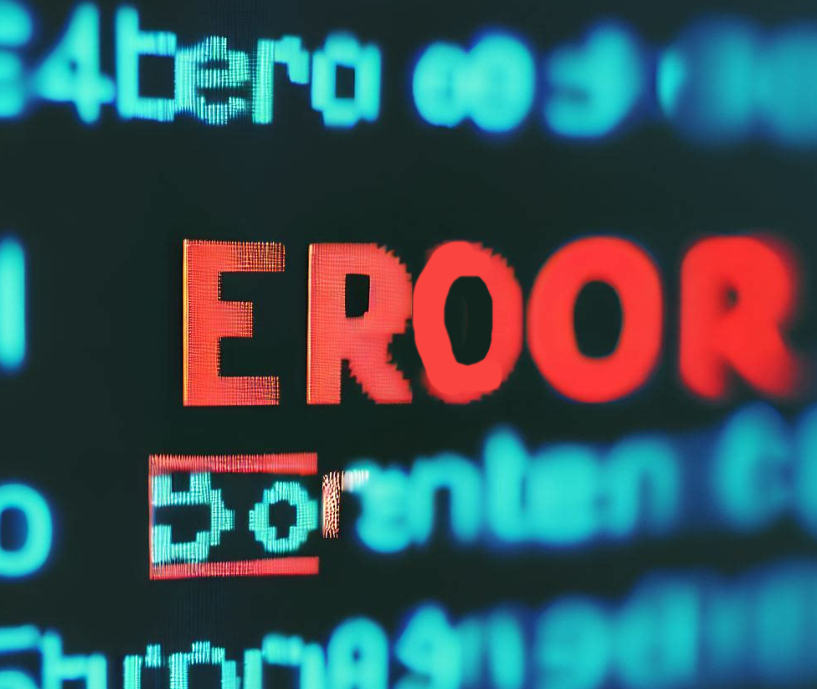
Client errors, a typical part of web browsing, often present challenges that needs immediate resolution. These are issues emanating from the client-side – the side of the user. Gaining insights into these errors leads to faster troubleshooting processes and finding solutions to the underlying problems presented by these errors.
These errors often appear when a request from the user’s browser to the web server cannot be met. This could stem from several reasons which might include problems with the internet connection or merely a typical typing error. Understanding these issues supports smoother interactions with web contents. Informative messages, known as HTTP status codes, are often communicated to users for these issues; being a common example is the 404 error which denotes that the requested web page cannot be found.
Certain intricacies are associated with client errors. These complexities derive from issues originating from the user’s end which could arise from misspelled URLs, attempting to access resources that no longer exist on the web server, or problems with client-side scripting. A categorization of these errors under HTTP 4xx status codes helps users identify what the specific problem is and could potentially aid them in troubleshooting the error.
Acquiring knowledge on client errors provides the tools required for individuals to understand the complexities involved in digital systems which in turn equips them to find effective solutions to the issues they face while interacting with the web. Oftentimes, addressing these problems might involve effortless solutions such as refreshing the page, retyping the URL, or advising the user to revisit the page at a different time when any potential server-side issues would have been hopefully resolved.
It’s essential for everyone who utilizes the web in any capacity to possess a basic understanding of client errors. The knowledge of this would help in promoting better individual troubleshooting skills, reducing the necessity to always involve a technician, and cultivating more informed web users who can efficiently interact with digital systems.
Grasping Server Errors
Shifting focus now to the realm of server errors, it is crucial to understand that this category comprises the second most prevalent type of errors on the web. These errors, unlike client-side issues, are not accountable to the user attempting to access the website. Instead, server errors are manifestations of glitches, mishaps, or breakdowns that are endogenous to the website’s functionality, existing beyond the control and influence of an average user.
Server errors are thereby reflecting imperfections or problems dwelling within the operating system of a website, and are typically the result of either programming oversights, technical mishaps or a system being crippled under the weight of too many simultaneous requests.

One important tool at our disposition to understand and diagnose these server-side issues is through the use of HTTP 5xx status codes. Among these status codes, one which is encountered quite frequently by users is the 500 Internal Server Error. This sort of error is a generic signal that something has gone amiss within the server, but it unfortunately does not provide any specifics about what exactly has transpired. The cause of such an error could range from an issue with the website’s coding, perhaps due to an error in a web application, to the server being overwhelmed with a barrage of access requests, effectively being unable to process them all.
Addressing and rectifying server errors is fundamentally the responsibility of the site owner or the designated system administrator. The first step toward rectifying such errors, regardless of their nature or cause, is to carefully sift through the server logs. It is within these logs that the clues leading to the root cause of the error are concealed.
The appropriate remedial steps need to be envisioned and implemented. For instance, if a bug within a web application has caused the error, the software may need to be debugged and patched. Other times, the server may require a simple reset to clear any temporary issues. At times, the error could be a result from the site being overloaded with requests, necessitating the site to be optimized for efficient resource usage and better load management.
Navigating the treacherous waters of server errors requires a fine balance of technical knowledge, diagnostic insight, and the ability to act in order to preserve the site’s integrity, functionality, and reliability. By understanding server errors and acting decisively, website owners can maintain a stable, functioning, and user-friendly web presence.
Acknowledging the Differences
Exploration of client errors versus server errors reveals distinct features and consequences each possess. At its core, client errors indicate issues with the request submitted, while server errors symbolize trouble in processing those requests, thus creating a sharp contrast between the two.
Client errors curate themselves under HTTP 4xx codes, famously fixable frequently by the users themselves. The remedies for these errors usually involve straightforward acts. It could be something as simple as accurately typing the right URL or pressing the refresh button on the browser. These strains of actions, though minor, can usually help circumvent the client-side issues with relative ease.
Server errors, branded under HTTP 5xx codes, contract the need for website administrators or owners to intervene and tackle the problems head-on. The prime actions to navigate this terrain could vary significantly. It may involve debugging, addressing specific software inconsistencies, enhancing server capabilities to intercept overloads, and numerous other technical undertakings. These steps are not only necessary, but they’re also integral to sustaining a website’s operation when dealing with server-side errors.
The digital sphere commands anyone venturing into it to grasp the contrast between client errors and server errors. It is the awareness of these differences that guides a smooth browsing experience, allowing the labyrinth of the web to appear less intimidating. Essentially, the crux of the matter lies in comprehending where these errors stem from and implementing the correct rectifications accordingly.
The aim, is to ensure that the cruise aboard the wide web stays as undisturbed as possible. Understanding the divergences between the functionalities of these two distinct error types, client and server, is the first crucial step toward achieving this end. With this understanding, the vision of making the internet a friendlier place for everyone becomes more approachable and achievable. Making the necessary distinctions and adjustments based on these errors, whether they stem from the user-client or the server, is an integral step and essential consideration within the digital world we inhabit.
